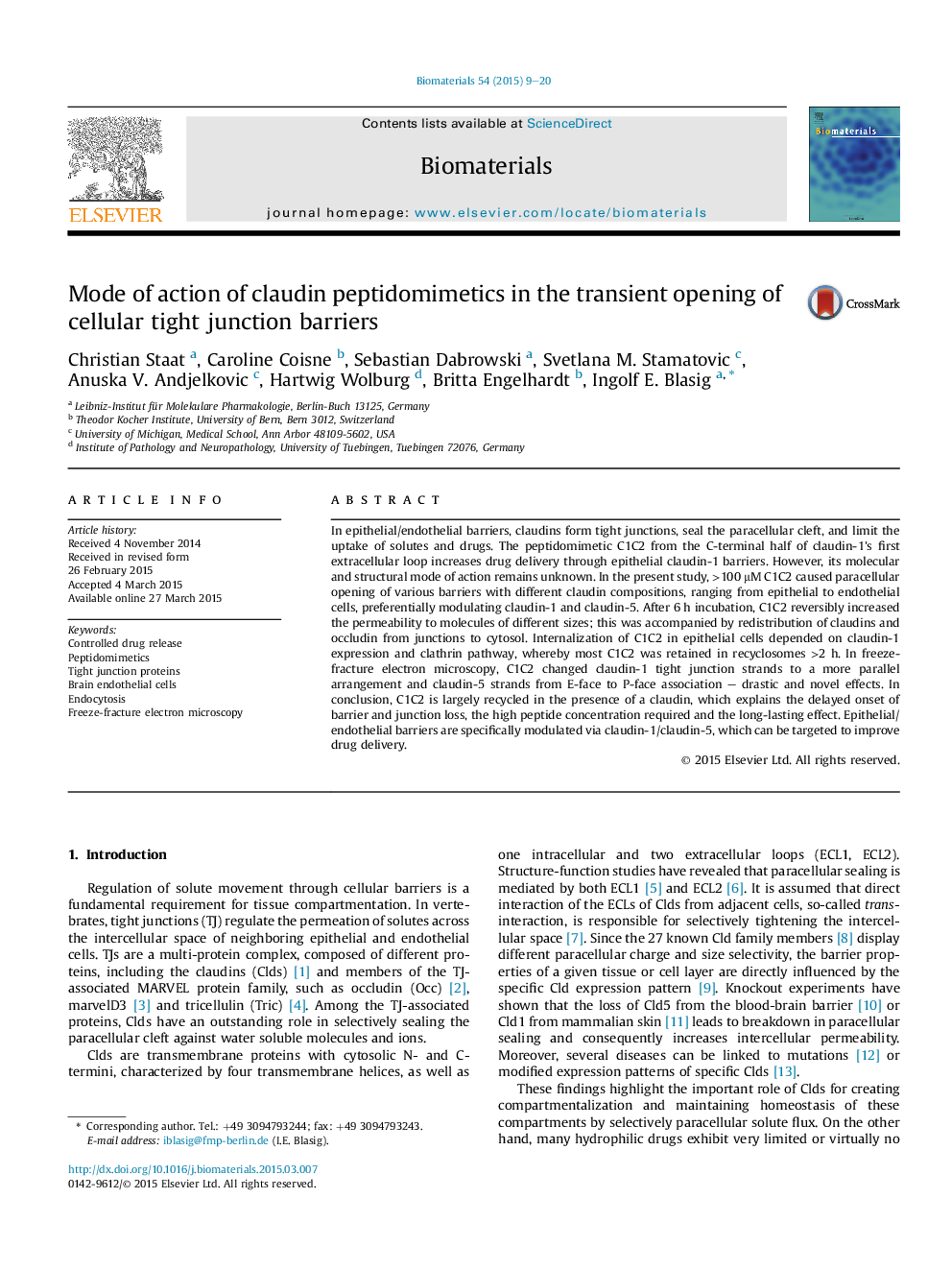| Article ID | Journal | Published Year | Pages | File Type |
|---|---|---|---|---|
| 6485778 | Biomaterials | 2015 | 12 Pages |
Abstract
In epithelial/endothelial barriers, claudins form tight junctions, seal the paracellular cleft, and limit the uptake of solutes and drugs. The peptidomimetic C1C2 from the C-terminal half of claudin-1's first extracellular loop increases drug delivery through epithelial claudin-1 barriers. However, its molecular and structural mode of action remains unknown. In the present study, >100 μM C1C2 caused paracellular opening of various barriers with different claudin compositions, ranging from epithelial to endothelial cells, preferentially modulating claudin-1 and claudin-5. After 6 h incubation, C1C2 reversibly increased the permeability to molecules of different sizes; this was accompanied by redistribution of claudins and occludin from junctions to cytosol. Internalization of C1C2 in epithelial cells depended on claudin-1 expression and clathrin pathway, whereby most C1C2 was retained in recyclosomes >2 h. In freeze-fracture electron microscopy, C1C2 changed claudin-1 tight junction strands to a more parallel arrangement and claudin-5 strands from E-face to P-face association - drastic and novel effects. In conclusion, C1C2 is largely recycled in the presence of a claudin, which explains the delayed onset of barrier and junction loss, the high peptide concentration required and the long-lasting effect. Epithelial/endothelial barriers are specifically modulated via claudin-1/claudin-5, which can be targeted to improve drug delivery.
Keywords
Related Topics
Physical Sciences and Engineering
Chemical Engineering
Bioengineering
Authors
Christian Staat, Caroline Coisne, Sebastian Dabrowski, Svetlana M. Stamatovic, Anuska V. Andjelkovic, Hartwig Wolburg, Britta Engelhardt, Ingolf E. Blasig,
